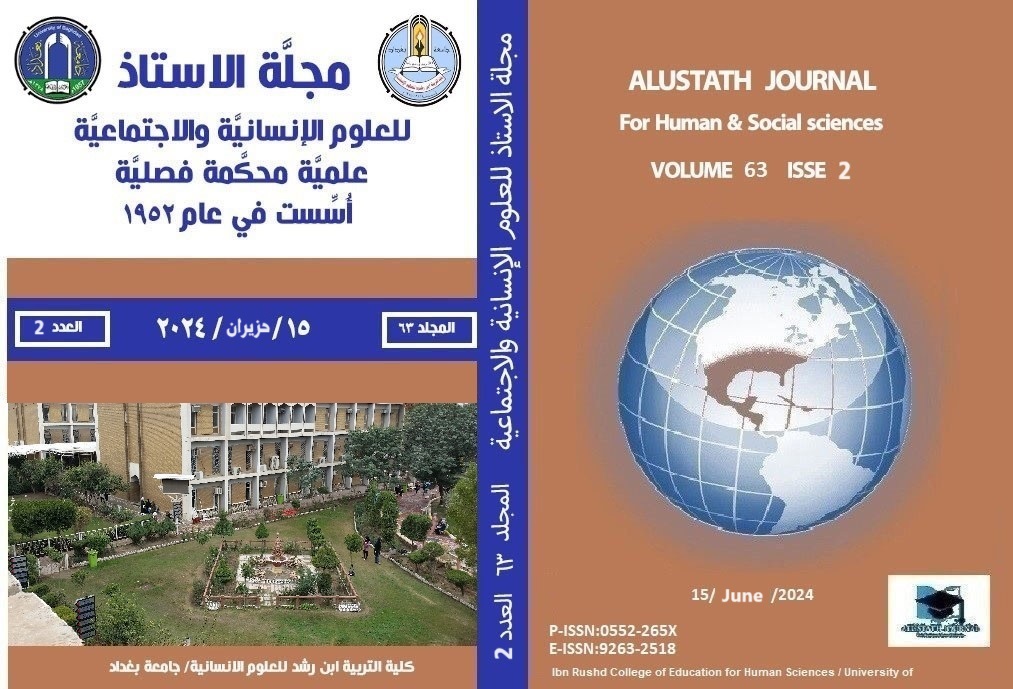منهج التشنيع اللفظي في دراسة التنمر النصي الالكتروني في وسائل التواصل الاجتماعي
DOI:
https://doi.org/10.36473/aerdmv05الكلمات المفتاحية:
التنمر الالكتروني ، التشنيع اللفظي، التنمر الالكتروني ، التنمر النصي الالكتروني , التواصل الاجتماعي.الملخص
الدراسة الحالية تتناول منهج التشنيع اللفظي في دراسة التنمر النصي الإلكتروني في وسائل التواصل الاجتماعي. أصبح التنمر عبر الإنترنت منتشرًا إلى حد ما خلال التفاعل عبر وسائل التواصل الاجتماعي. تهدف الدراسة إلى تحليل عينة مكونة من 60 تعليقًا على الفيسبوك مأخوذة من وكالات أنباء ومواقع إلكترونية مختلفة. وترى الدراسة أن التنمر الإلكتروني يتم تطبيقه من أجل الوصول إلى غاية معينة. تتكون عينة الدراسة من تعليقات لستة مواضيع مختلفة. وتم أخذ 100 تعليق لكل موضوع من المواضيع الستة. نموذج الدراسة المتبع هو آلان وبوريدج (1991) الذي يصنف التشنيع اللفظي إلى ثمانية أنواع. يتم تنفيذ عملية التحليل من خلال أخذ الوظيفة التي يمكن أن يحققها التنمر عبر الإنترنت في الاعتبار. تكشف نتائج الدراسة أن الوظائف الثلاث التي سجلت أعلى نسبة تكرار هي "إظهار الغضب"، و"التأكيد على شيء ما"، و"تمثيل حالة سيئة". الكلمات المفتاحية: التنمر الالكتروني ، التشنيع اللفظي، التنمر الالكتروني ، التنمر النصي الالكتروني , التواصل الاجتماعي.
التنزيلات
المراجع
References
Abbas, Amthal, M. and Kudhayir, Shaqi, I. (2016). Multi-Functionality of Impoliteness in Professional Discourse with Special Reference to Translation. Journal of Research Diyala, Volume, Issue 71, Pp 261-638.
Allan, K. and Burridge, K. (1991). Euphemism and Dysphemism: Language Used as Shield and Weapon, New York: Oxford University Press.
Allan, K. and Burridg, K. (1988). Sex-Related Euphemism and Dysphemism. An Analysis in Terms of Conceptual Theory. www.google. com.
------------------- (2003). Language and Power: Euphemism and Dysphemism www.google.com.
------------------ (2006). Forbidden Words: Taboo and the Censoring of Language. Cambridge: Cambridge University Press.
------------------ (2009). Natural Language Semantics. Oxford & Malden MA: Blackwell. www.google.com.
Anderson, Jenn, Bresnahan, M. and Musatics, C. (2014). "Combating Weight-Based Cyberbullying on Facebook with the Dissenter Effect." Cyberpsychology, Behavior, and Social Networking: 281-86.
Culpeper, J. (1996). "Towards an anatomy of impoliteness". Journal of Pragmatics. 25: 349-367.
Fernández, C. E. (2006). Euphemistic Strategies in Politeness and Face Concerns. Pragmalinguistica, 13, 77-86. Doi:http://dx.doi.org/10.25267/.i13.05.
---------------------- (2015). Sex in Language: Euphemistic and Dysphemistic Metaphors in Internet Forums. Bloomsbury Academic: 978-1472-59652-9
Gibbons, B. J. (2014). Avoiding confrontation through euphemism. Across the Board, 38(March/April). P. 68.
Harris, Linda, Kenneth Gergen and John Lannaman, (1986). "Aggression Rituals". Communication Monographs. 53: 252-265.
Hinduja, S., and Patchin, J. W. (2008). Cyberbullying: An exploratory analysis of factors related to offending and victimization. Deviant Behavior, 29(2), 1–29.
Labov, William, (1972). Language in the inner city: Studies in the black English vernacular. Oxford: Blackwell.
Lowth, Mary (2019). Anger Management, Rev. John Cox https://patient.info/mental-health/anger-management
MacKay, W. (2013). Respectful and Responsible Relationships: There’s No App for That (The Report of the Nova Scotia Task Force on Bullying and
Cyberbullying), Available at SSRN: https://ssrn.com/abstract=2123494
Power, A., Keane, A., Nolan, B., and O’Neill, B. 2017. “A Lexical Database for Public Textual Cyberbullying Detection”. Special issue of Revista de lenguas para fines específicos, entitled New Insights into Meaning Construction and Knowledge Representation.
Ruiz, H. J. (2009). Understanding Tropes: At the Crossroads Between Pragmatics and Cognition. Germany: Peter Lang GMBH. P..56
Singhal, P. and Bansal, A. (2013). Improved Textual Cyberbullying Detection Using Data MiningInternational Journal of Information and Computation Technology. Vol. 3, No. 6. pp. 569-576.
Warren, B. (1992). What dysphemism tell us about the interpretation of words. Studia Linguistica, 46(2), 128-172.
Weiss, M. L. (2014). New media, new activism: trends and trajectories in Malaysia, Singapore and Indonesia. International Development Planning Review, 36(1), 91-109. doi:10.3828/idpr.2014.6
Zimmermann, Klaus (2003). "Constitución de la identidad y anticortesía verbal entre jóvenesmasculinoshablantes de español". In D. Bravo (ed.), La perspectiva no etnocentrista de la cortesía: Identidad sociocultural de lascomunidadeshispanohablantes. EDICE program. www.edice.org, pp. 47-59.









